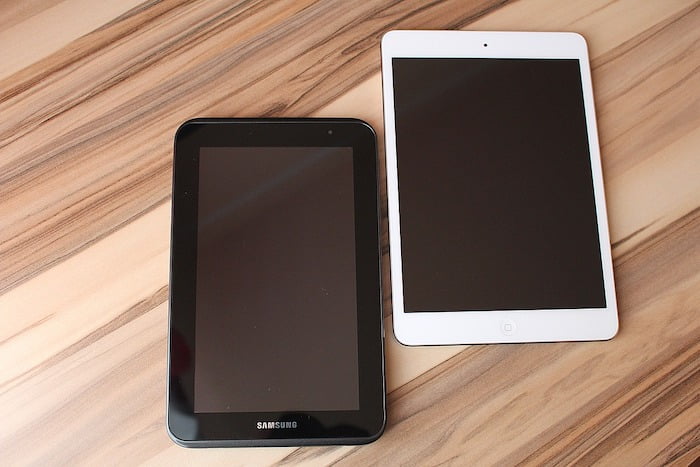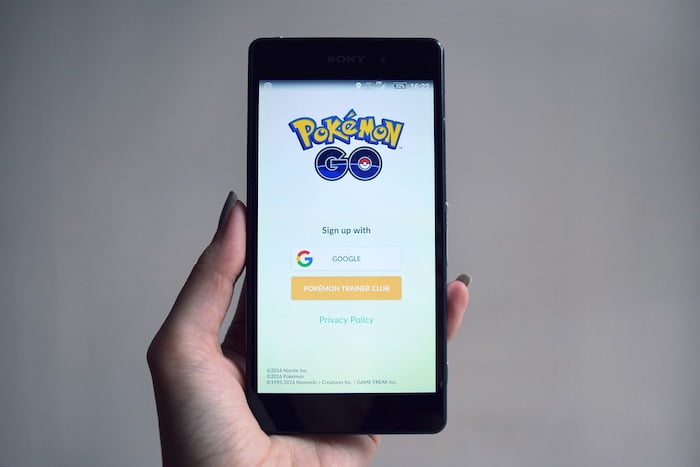Table of Contents
Artificial Intelligence (AI) has long-since been seen as one of the most significant transformative technologies of humankind. For the last century, everyone from futurists and writers to computer scienctists and business experts have spoken and speculated about what the age of robots will be like. As we begin 2025, the question so many of us ask is, are we here yet? It’s a reasonable line of questioning due to how much change we’ve seen in the last three years with economic, political, social, medical, digital, and industrial disruption on a global scale. There is a lot that is known and unknown simply because we’re overwhelmed and things are happening quickly.
So, what is the answer to, have we entered the robotics age?
It’s neither a strictly yes nor a strictly no answer and yet, neither is it entirely in the middle of the two. What is true is that right now we are in the midst of greater automation, more advanced AI — in a range of diverse forms, and, as of late 2022 we’re seeing the beginnings of humanoid robot prototypes such as Tesla’s Optimus. The future is both here and not here — we’re not in limbo but it’s not the Jetsons either. Moreover, AI is existing with us in myriad forms we don’t think about, don’t realize, or actually are taking for granted — just think of our Internet of Things devices, chatbots in customer service, and the TikTok algorithm — it’s so embedded in our mobile applications and internet activity.
In this article, we’re discussing how this AI shapes mobile app development, specifically for Apple iOS-compatible applications and Android-compatible applications. Over the course of this blog, we’ll cover:
- What is the future of iOS and Android mobile app development
- How is AI playing a role in app development for Apple iOS, Android, and Windows
- Where hybrid mobile app development fits in with AI progress
- What AI for iOS & Android mobile app development will look like in 2025 and beyond — 10 trends for the new year

What is the future of iOS and Android mobile app development?
The future of iOS and Android mobile app development is an essential topic for all of us. Mobile app development alone is in a major growth period, according to Globe Newswire, and by 2030 it is projected the global market will have a worth of $366.34 billion USD. The nuances of the market are particularly relevant to our article as reporting from Market Research Future shows two key factors driving this value surge:
- The increasing use of smartphones
- The raised application of different augmented reality (AR) and virtual reality (VR)
These two factors are reportedly both subject to market segmentation wherein, “The global mobile app development market is bifurcated based on application and platform,” with a specification that, “By platform, iOs will lead the market over the forecast period.”
Stepping away from this reporting and looking to other sources, iOS and Android mobile app development do have somewhat diverging performances in the current market. At present, after 10 years of a mobile app industry, Apple and Android both operate uniquely in their segments of mobile app development with their revenue streams. Business of Apps writer Mansoor Iqbal says that, as of January 2025, Apple has less than 15 percent of the overall market share in terms of available apps though it is the leader in revenue generation; Google Play, where Android apps are mostly sold, may have a larger volume of the market but Apple is more popular in regions with high income while Google Play market majority is in regions that generate less revenue plus it is also banned in China, another market tied to sizeable revenue for Apple.
Ultimately, based on how much of the total mobile app development market both Apple iOS and Google Android applications take up, our assessment is that native app development will continue to be the winning choice for their performance, consistency, adaptability and immediacy for updates, securest, and compliance with the respective app market’s sale guidelines.

How is AI playing a role in app development for Apple iOS, Android, and Windows
In this moment, commentators and tech spokespersons say that AI has emerged as the most fundamental trend in all development. We will explain more below however the announcement and response to ChatGPT from OpenAI is a focal part of this: the world has changed in leaps and bounds due to its prototype release.
Looking at the entire spectrum of app development for iOS, Android, and Windows, we need to review Apple, Microsoft, Google, and Meta. These four technology companies are still the most formidable forces and influential forces in app development and technology as a whole thus it pays to understand the foremost ways each is contributing to the most recent news in this space. How AI evolves will likely impact what happens next though based on other market factors and the following activities of the leading tech companies:
- Apple — From Siri to FaceID technology, Apple products have long since been geared towards using AI in a myriad of forms.
- Microsoft — Their main play has been their recent investment in ChatGPT that is a history-making prototype for accurate, reliable Machine Learning (ML) and Natural Language Processing (NLP) AI; it is already being reported that this technology is going to be integrated with their Power BI product.
- Google — The release of ChatGPT has led Google to shift their LaMDA product to be more for actual external utility and they are rushing to join the AI wars.
- Meta — With their metaverse technology, the other tech companies are adjusting their activities to keep up with the VR/AR promises from Mark Zuckerberg.
iOS and Android mobile app development will be informed by these trends in powerful hardware and systems, investment in various iterations of AI, and the move towards the metaverse with AR and VR. Though these are timely points outlined above, it is important to note here that this space is evolving swiftly and, as per the example about Google’s response to ChatGPT, there is serious competition between companies in this “AI race”.

Where hybrid mobile app development fits in with AI progress
We can’t review the market analysis of AI for iOS and Android apps without a brief discussion of hybrid mobile app development in relation to native app development. AI is obviously going to continue to profoundly change the way apps are designed and deployed from data analysis to UX, so it begs the conversation of whether developers should then focus on native apps for iOS and Android or if they should instead proceed with hybrid development for wider, more agile deployment for both app markets.
On the one hand, it could be argued that if it is urgent to bring an app to a target market across both app stores then a hybrid development is always an excellent, robust, and wise investment. Conversely though, and as mentioned above, one challenge with AI, is that at present there is still some proprietary elements with leading products — namely the OpenAI/Microsoft ChatGPT prototype and Google’s LaMDA that may both be better suited to Android native app development. In many ways, it is almost too early to tell which option to take. On the other hand, other industry pundits are open-minded on if Apple is nurturing its own iteration of ChatGPT either with an updated Siri or if they will actually integrate the OpenAI tech into their own products.
Although we have taken the time and tackled how pivotal this dawning age of AI will be for iOS and Android app development alike, unless the AI is the fulcrum of the product, choosing between hybrid or native app development remains a decision of what is strategically right for the client ordering the app. Investing in the development process and working to standout in the app store is about developing a superior platform that wins users — it’s not entirely about the technology unless that is being chosen for use based on a well-conceived, thoroughly-researched development strategy. The soundest comment we can make here is that this is a “watch this space” rather than a “rush this choice” situation.

What AI for iOS & Android mobile app development will look like in 2025 and beyond — 10 trends for the new year
Now that we have explored the role of AI in mobile app development, we will look at the real-world uses that are going to influence what this will be like for iOS and Android apps this year and into the reminder of the 2020s. AI has an unexpected part in these trends that goes far beyond the default expectations of gaming and communication; this year and in the years ahead, we are going to see that AI makes our app experiences faster, more accurate, more intriguing, and richer than we’ve imagined.
Let’s unpack these 10 Trends for 2025 and beyond
- 5G functionalities that strengthen overall performance
- Entertainment partners for better live experiences
- Chatbots enhance data analysis to revolutionize customer service
- E-commerce ascends to the next level
- Voice assistant software — the next era
- ChatGPT for Microsoft — and various iterations from each company take over apps
- Using AI tools as search engines
- Gaming AR/VR
- Hardware informs apps
- Mobile Health (mHealth) functionalities get even better
1. 5G functionalities that strengthen overall performance
As our infrastructure improves so to does the AI capabilities of apps. Progressing to 5G functionalities is foundational to experiencing all elements of augmented and virtual reality that has been hypothesized and promised up until now. With the mainstream infrastructure of 5G, apps are able to work more quickly, sustain connections, and enable a more seamless user interface (UI). Even now, ChatGPT, as a leading AI, is not performing as well as it could with overloaded servers that can’t cope with demand. Stable connectivity is important — and desirable for all of us — but AI requires markedly more in terms of power to fulfil the user experience (UX) it’s designed for. This is why 5G is our first trend for AI in mobile app development.
2. Entertainment partners for better live experiences
One of the main things we missed during the Covid-19 pandemic was live music and 2022 was the year that many artists resumed performing. Unfortunately, stress and economic pressures have taken a toll on musicians the world over and murmurs are now a sustained chatter about how touring can be sustainable in this period. Enter: Apple and Microsoft’s partnerships with artists and using AI platforms for immersive experiences wherever audiences are. Harry Styles just partnered with Apple and a performance from Sting was just hosted by Microsoft suggesting that these technology partnerships are a way forward for the show to go on. There are so many ways this is possible and absolutely in demand. For example, in 2018 Paris Hilton also reported that she was working on developing her own virtual holographic likeness so she didn’t have to physically tour her DJ shows internationally anymore. With AI, fans can immerse in their exclusive iOS or Android app to watch a performance from their favourite artist and then, if it’s recorded, they could revisit the set over and over again. This promises sustainability benefits, too, as touring is notoriously hard on all people involved and the planet.
3. Chatbots enhance data analysis to revolutionize customer service
Chatbots are a well-known, everyday kind of AI yet with the latest generations launched there is an accuracy and interactivity that we’ve never seen before thanks to exceptional developments in tech. In 2025, we’re likely to see a mainstream utilization of this AI that is being used on the other side of customer service to identify issues that then liberates developers to design and implement data-based solutions that charms users (or even makes them feel like their minds are being read!). Customer service is a tricky part of operations for many app owners as they are working to deliver support, resolutions, responses, and interaction on all different fronts. Using data to review what is working in real time while also incorporating the chatbot functionalities for personalizations actually brings back the capacity for a human touch in the commercial space. This has potentially endless returns for businesses as inflation continues and staff are under pressure to deliver results even while they are working with less resources. Across industries, this is a path towards meeting customer needs and overhauling value propositions to convert sales.
4. E-commerce ascends to the next level
E-commerce functionalities are soaring with AI and across both iOS and Android, this has become both robust and engaging. More than ever, users are reporting that not only would they prefer to shop online rather than instore, their number one is to shop in a brand’s native app. AI makes that shopping experience even sweeter as it learns what the customer wants, what they like and what they have been looking at, and can make the userflow to purchase a pleasure for the purchaser. With payment gateways also integrated into iOS and Android apps, the AI can allow for virtual try-ons and an emulation of a normal shopping experience as well. E-commerce is going to keep expanding and these features work to keep the user in-app so that companies enjoy greater returns on their app development investment over time all while learning through the data analysis exactly what shoppers are loving about their platform.
5. Voice assistant software — the next era
Voice assistant software is ubiquitous now even if we’ve forgotten it’s AI: both Apple’s Siri and Amazon’s Alexa are household names while the Google Home is shown to make people’s lives easier from shopping to securing their home. As voice assistant technology gets even better, on both iOS and Android apps, there are more ways that people can rely on this to simplify and streamline their life from work to play. Freeing people to focus on other things like spending time with loved ones, caring for themselves, or pursuing recreational projects is part of what users love about this AI. This next era of voice assistant software is naturally integrating with everything we do as the AI becomes even more accurate and can be used to plan life events, like holidays, and assess danger through smart remote home cameras. Sustainability goals can also be pursued with voice assistants able to offer up data about what users have in their fridges or let them know where has quality produce for their shopping. Year-on-year, this AI keeps growing with people.
6. ChatGPT for Microsoft — and various iterations from each company take over apps
Since ChatGPT was announced in November 2022, the market response for both the free and the forthcoming paid Pro version has been staggering. This monumental AI development immediately resulted in interest from Microsoft who have since made a multibillion dollar investment in the technology. In the short three months the ChatGPT prototype has been available, there has been widespread flow-on effects: Google has indicated it will change it’s LaMDA product and numerous copycat versions have popped up in the app stores. ChatGPT is seen as what we can expect AI to look like in the future as a baseline. This means people will be able to turn to iOS and Android apps for information, project planning and administration, interactive discourse, and so much more. As Microsoft has invested with OpenAI, there is a sense that this particular trend may have more of an impact on Android users though it is arguably uncertain — and people are very excited to see what is next in this area as research and developments continue throughout the remainder of 2025 and onwards.

7. Using AI tools as search engines
Following on from ChatGPT, we have the separate yet related topic of how users are going to use AI tools as search engines from here on out. This was almost instantaneously validated by Google after the launch of OpenAI’s prototype with leaks from Alphabet (Google’s parent company) that their internal team was appraising how their own LaMDA AI could in turn be engineered into the Google search engine. Flash-forward to now and as of early February 2025, Microsoft have just begun demo-ing ChatGPT technology in their own Bing search engine. For ordinary users, once AI tools like ChatGPT and associated ML/NLP AI are in all apps, they will be able to interact with the interface to gain information, liaise on ideas, ask for suggestions based on the system’s knowledge, and even outline original concepts across all fields of expression, creativity, industry, and academia. Treating the AI as the vast well of both trained and synthesized information makes these tools an evolving kind of search engine that is actually living in many ways the more people interact and input with it.
8. Gaming AR/VR
Gaming is currently the biggest revenue source in both the iOS and Android app markets with an annual turnover of $103.5 billion USD alone in 2022. Users turn to apps for all types of games though AR and VR iterations are where the market is going both for recreation and education. When Pokemon Go emerged in 2016, it was tremendously intriguing and joyful for people to be able to spend time out in the world playing a game that merged their pre-existing entertainment with real-world experience. In the seven years since, technological advancements have made games across both iOS and Android even more immersive, able to be played on the go, and their mobile phone can basically be converted into a portable gaming console at no extra cost to the user. The social and communal elements of this technology has an additionally positive value for users as they can spend time with friends even at a distance and with the release of newer hardware (see next trend), this will have an expansive impact on users again.
9. Hardware informs apps
Hardware is now informing apps with AR/VR hardware from all the major tech companies starting to materialize. Meta has the Oculus VR technology, Microsoft is pitching the HoloLens 2 for commercial use, and Google is building its Project Iris headset, for example, both which show the ways these companies are introducing new revenue streams to their product suites. If we are talking about big fish, rumor has it that Apple is about to “enter the field of VR/AR” report Rob Farthing and Chris Hull for AR Post which points to where the tech monolith has been investing in the AI race. Apps are organically — or understandably — being developed to support this hardware with a natural segregation between iOS and Android depending on the company behind the products. For users, these offerings are still quite niche even with the uptake of millions of units being sold in the last few years. From here, as battery life improves and product apps become more robust there is hope that this area of AI will be an actual tech platform beyond the accessories needed to use them.
10. mHealth functionalities get even better
A topical tech trend that was normalized during the pandemic and is steadily evolving now is mHealth. Apps that allow users to connect with all manner of health services including appointment booking and Telehealth, holistic medicine, pharmaceuticals, psychological and mental health practitioners, food and nutrition, fitness, test results, and follow-up care are undoubtedly of an unparalleled use. As AI flourishes so too will these platforms gain more functionality for ease of access that bypasses or overcomes many of the inequitable and even fatal barriers to services throughout the world. What the pandemic proved is that remote, AI-powered health care is key in health promotion and can actually keep everyone, on all sides, safer and possibly healthier. This is a vertical of app development that natural has both iOS and Android platforms available for inclusivity and accessibility; though it is uncertain what will happen with AI in this space on an AR/VR level, even for simpler data-based tech, there is remarkable scope for patterns in user health data in conjunction with macro and micro epidemiology that can help care for communities everywhere. If this also alleviates pressure on essential medical workers without compromising the level of care for patients in need, then even simply using AI for managing administration removes industry burdens that wear out staff and might lead to mistakes in the long run. From all sides, these are phenomenally beneficial technological capabilities.
Conclusion
In conclusion, AI will definitely shape iOS and Android mobile app development for as long as these two types of app platform exist in the market. Our number one takeaway from this article is that this space is genuinely in a flux phase that is exhilarating for all of us while being difficult to predict. Keeping abreast of announcements from Google, Microsoft, and Apple is, without argument, going to be the way to see what is next though the trends we have reviewed will retain their currency both for customers and mobile app developers for the coming months and years, too.





